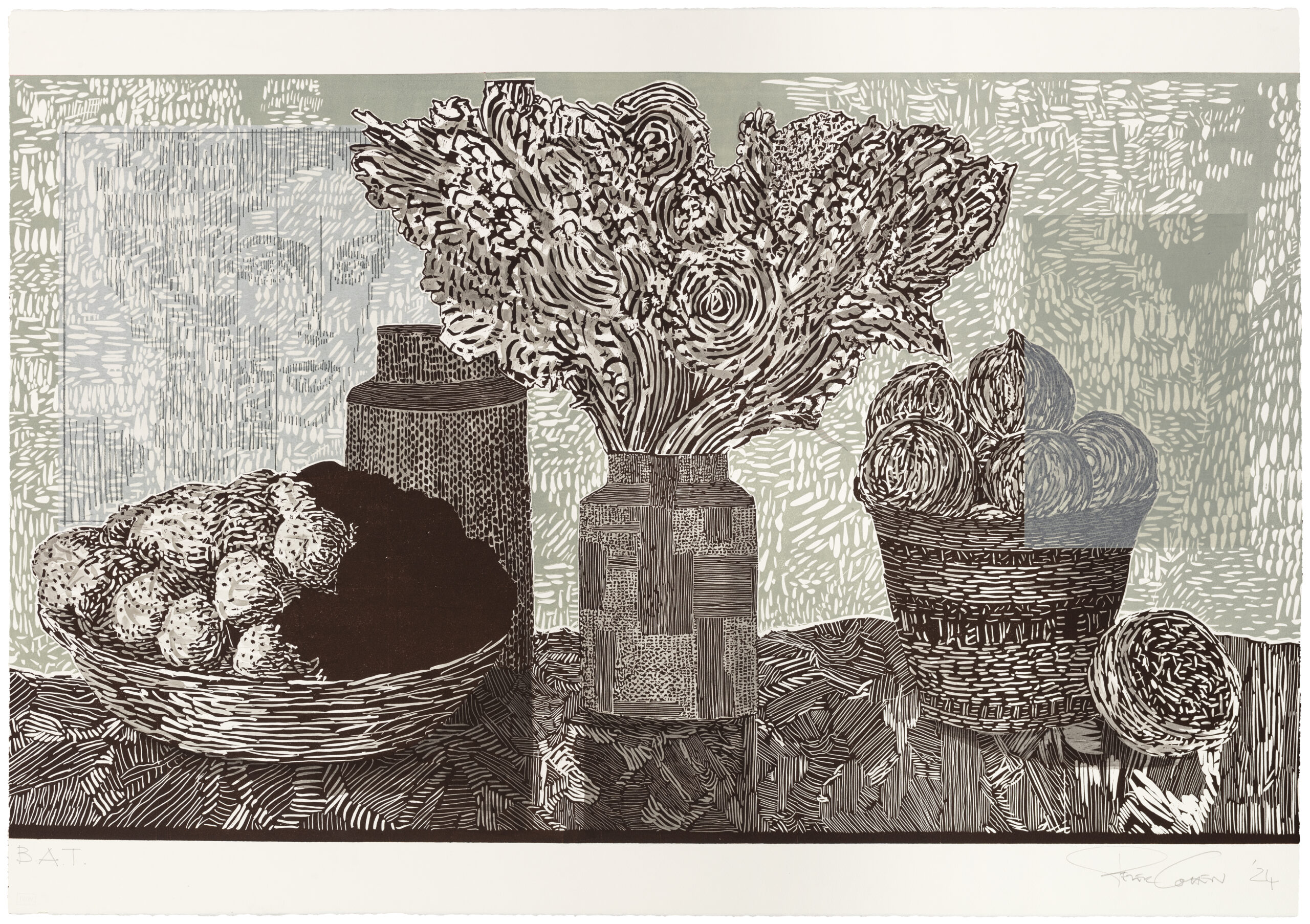Written by Sbongiseni Khulu
In September of 2024 the David Krut Workshop welcomed another collaboration with Peter Cohen, this time to bring into existence a mixed media limited edition still life print. In realizing the print collaborative printmakers Sbongiseni Khulu and Jesse Shepstone helped transfer via tracing, carve and print Cohen’s hand drawn digital image using linoleum, transfer paper, carving tools and elbow grease. After which they would go on to overlay various mediums onto the linocut print such as soft ground and monotype on thin traditional Japanese papers (Tosa washi, Gampi), collage and hand paint in search of what printmaking refers to as the B.A.T. “bon à tirer,” in French meaning “good to pull.” It is the final proof approved by the artist before the edition is printed.

Still Life compositions often include elements of man-made forms, such as columns, vases, or windows, which can symbolize the human desire to create lasting structures amidst the fragility of life. These structural elements serve as a reminder of our attempts to establish permanence and order in a world that is otherwise inherently temporary and chaotic.
Cohen’s latest offering, “Still life with portrait” delves into the various motifs of what makes a still life. In it Cohen interplays light with shadow, organic with inorganic, and life with decay. In doing so, the artwork both reaffirms and challenges the bedrock by which it, and all other still life art is measured and categorized. It is from these measures that Cohen adheres to the phrase “art for art’s sake” (said to be coined/popularized by French philosopher Victor Cousin) by creating without constraints and allowing aesthetics to take centre stage.


Over the years artists have freely depicted household objects coupled with fruits, flowers and at times human or animal skeletons as a way of inviting the viewer to contemplate the passage of time and the impermanence of life. Thus moving away from the overbearing religious or political dogmas of the time. By showcasing these objects in various stages of decay or arrangements that suggest a fleeting moment, artists hope to evoke a sense of new found appreciation for life and the ephemeral nature of existence. This phenomenon is referred to as “memento mori” in Latin, it serves as a subtle reminder of one’s impermanence even in moments of abundance, as death comes for us all. However, Cohen subtly subverts this trope by showcasing a line based soft ground portrait of a young woman/female, with dual functionality. The first, as a reference to Cohen’s previous body of work and inspirations. The second, to suggest the Latin phrase “memento vivere” which translates “remember to live.”
